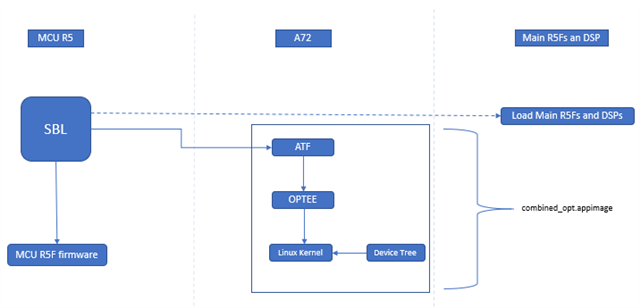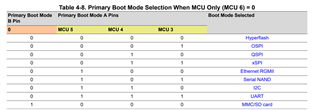Tool/software:
Hello,
I'm using the J784S4 evaluation board and I'm trying to use this boot flow with MMCSD :

RTOS SDK: ti-processor-sdk-rtos-j784s4-evm-09_00_00_02.
What I did:
- make -s -j sbl_mmcsd_img_hlos BOARD=j784s4_evm
- copy boot/sbl/binary/j784s4_evm/mmcsd/bin/sbl_mmcsd_img_hlos_mcu1_0_release.tiimage to boot partition as tiboot3.bin
- copy drv/sciclient/soc/V6/tifs.bin to boot partition as tifs.bin
- copy boot/sbl/tools/combined_appimage/bin/j784s4_evm/combined_opt.appimage to boot partition as app
When I switch on the board, there is no output on UART8, MCU_UART0 or WKUP_UART0 ...
Have I done something wrong ?
Thanks,
Bruce




